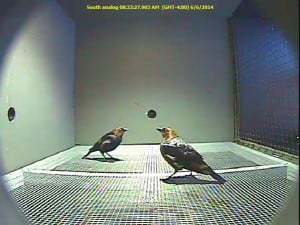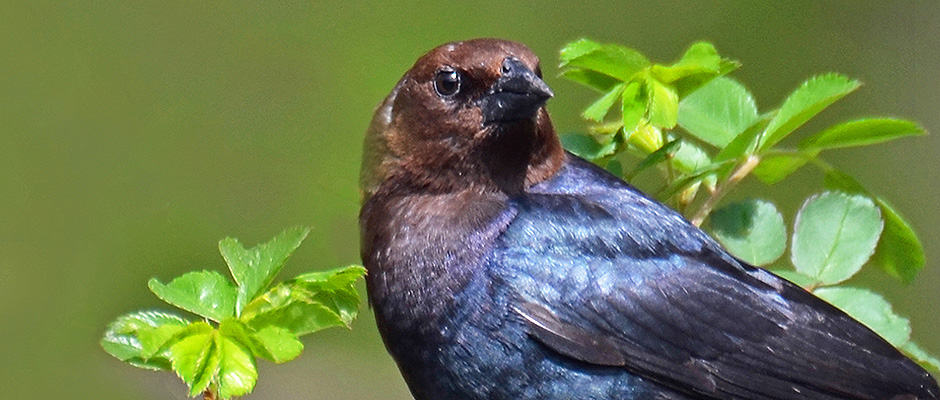Share this article
Speed Kills: Why Birds Collide with Vehicles
The ways in which birds respond to approaching objects is critical when it comes to their ability to detect predators, forage, flock, and avoid collisions. Understanding variations in animal visual capabilities and other sensory systems may shed light on how animals detect and avoid threats from approaching aircraft, other vehicles, wind turbines and communication towers.

Captive brown-headed cowbirds in a simulation chamber. Soon the birds will watch and respond to a video of an approaching vehicle on the computer monitor to the right.
Image Credit: USDA, Wildlife Services
To better understand birds’ responses to approaching vehicles, researchers at the USDA Wildlife Services’ National Wildlife Research Center (NWRC) placed captive brown-headed cowbirds into a simulation chamber where the birds watched videos of vehicles approaching at various speeds. Researchers watched the reactions of the birds to the videos and noticed the birds could successfully avoid slower-moving vehicles, but vehicles at speeds over 75 mph overwhelmed the birds’ escape strategies.
“Instead of adjusting their escape time to the speed of the car, the birds only evaluated the distance between themselves and the vehicle,” states Dr. Travis DeVault, a supervisory research biologist at NWRC’s Ohio Field Station. “No matter how fast the car approached, the birds always took off when it was roughly 90 feet away.”
Information gained from the study will aid in the development of lighting systems for aircraft and other vehicles that help birds to detect and respond to approaching objects sooner and avoid collisions.
Watch a video of the cowbirds in the simulation chamber:
Wildlife Services is a Strategic Partner of The Wildlife Society.
Header Image: Image Credit: Rodney Campell via Flickr








